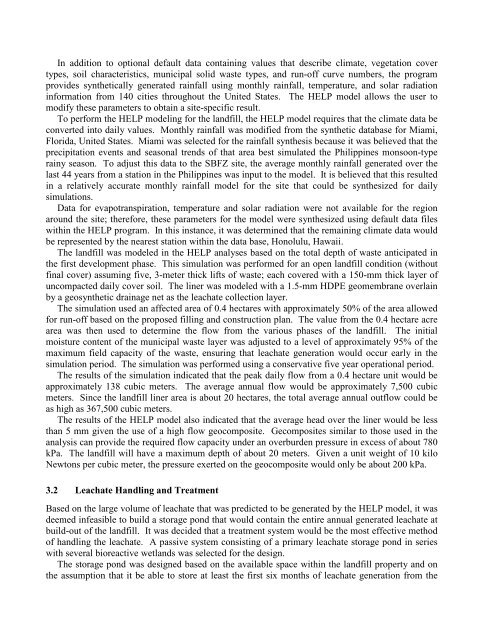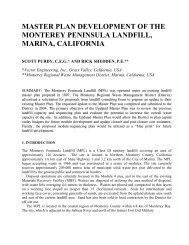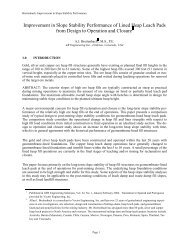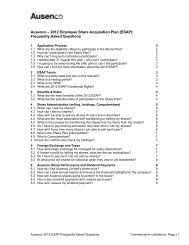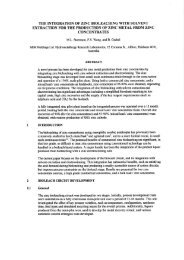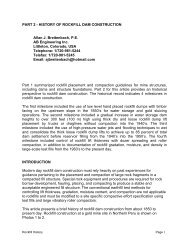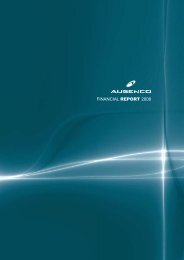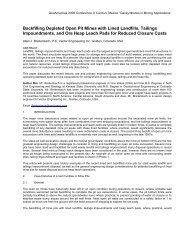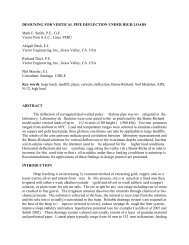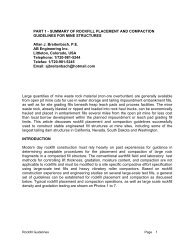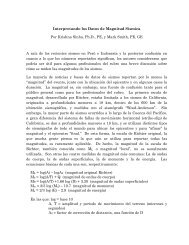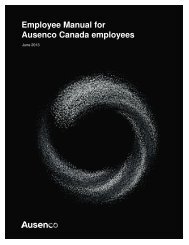SITE SELECTION STUDY FOR A NEW SANITARY ... - Ausenco
SITE SELECTION STUDY FOR A NEW SANITARY ... - Ausenco
SITE SELECTION STUDY FOR A NEW SANITARY ... - Ausenco
Create successful ePaper yourself
Turn your PDF publications into a flip-book with our unique Google optimized e-Paper software.
In addition to optional default data containing values that describe climate, vegetation covertypes, soil characteristics, municipal solid waste types, and run-off curve numbers, the programprovides synthetically generated rainfall using monthly rainfall, temperature, and solar radiationinformation from 140 cities throughout the United States. The HELP model allows the user tomodify these parameters to obtain a site-specific result.To perform the HELP modeling for the landfill, the HELP model requires that the climate data beconverted into daily values. Monthly rainfall was modified from the synthetic database for Miami,Florida, United States. Miami was selected for the rainfall synthesis because it was believed that theprecipitation events and seasonal trends of that area best simulated the Philippines monsoon-typerainy season. To adjust this data to the SBFZ site, the average monthly rainfall generated over thelast 44 years from a station in the Philippines was input to the model. It is believed that this resultedin a relatively accurate monthly rainfall model for the site that could be synthesized for dailysimulations.Data for evapotranspiration, temperature and solar radiation were not available for the regionaround the site; therefore, these parameters for the model were synthesized using default data fileswithin the HELP program. In this instance, it was determined that the remaining climate data wouldbe represented by the nearest station within the data base, Honolulu, Hawaii.The landfill was modeled in the HELP analyses based on the total depth of waste anticipated inthe first development phase. This simulation was performed for an open landfill condition (withoutfinal cover) assuming five, 3-meter thick lifts of waste; each covered with a 150-mm thick layer ofuncompacted daily cover soil. The liner was modeled with a 1.5-mm HDPE geomembrane overlainby a geosynthetic drainage net as the leachate collection layer.The simulation used an affected area of 0.4 hectares with approximately 50% of the area allowedfor run-off based on the proposed filling and construction plan. The value from the 0.4 hectare acrearea was then used to determine the flow from the various phases of the landfill. The initialmoisture content of the municipal waste layer was adjusted to a level of approximately 95% of themaximum field capacity of the waste, ensuring that leachate generation would occur early in thesimulation period. The simulation was performed using a conservative five year operational period.The results of the simulation indicated that the peak daily flow from a 0.4 hectare unit would beapproximately 138 cubic meters. The average annual flow would be approximately 7,500 cubicmeters. Since the landfill liner area is about 20 hectares, the total average annual outflow could beas high as 367,500 cubic meters.The results of the HELP model also indicated that the average head over the liner would be lessthan 5 mm given the use of a high flow geocomposite. Gecomposites similar to those used in theanalysis can provide the required flow capacity under an overburden pressure in excess of about 780kPa. The landfill will have a maximum depth of about 20 meters. Given a unit weight of 10 kiloNewtons per cubic meter, the pressure exerted on the geocomposite would only be about 200 kPa.3.2 Leachate Handling and TreatmentBased on the large volume of leachate that was predicted to be generated by the HELP model, it wasdeemed infeasible to build a storage pond that would contain the entire annual generated leachate atbuild-out of the landfill. It was decided that a treatment system would be the most effective methodof handling the leachate. A passive system consisting of a primary leachate storage pond in serieswith several bioreactive wetlands was selected for the design.The storage pond was designed based on the available space within the landfill property and onthe assumption that it be able to store at least the first six months of leachate generation from the


